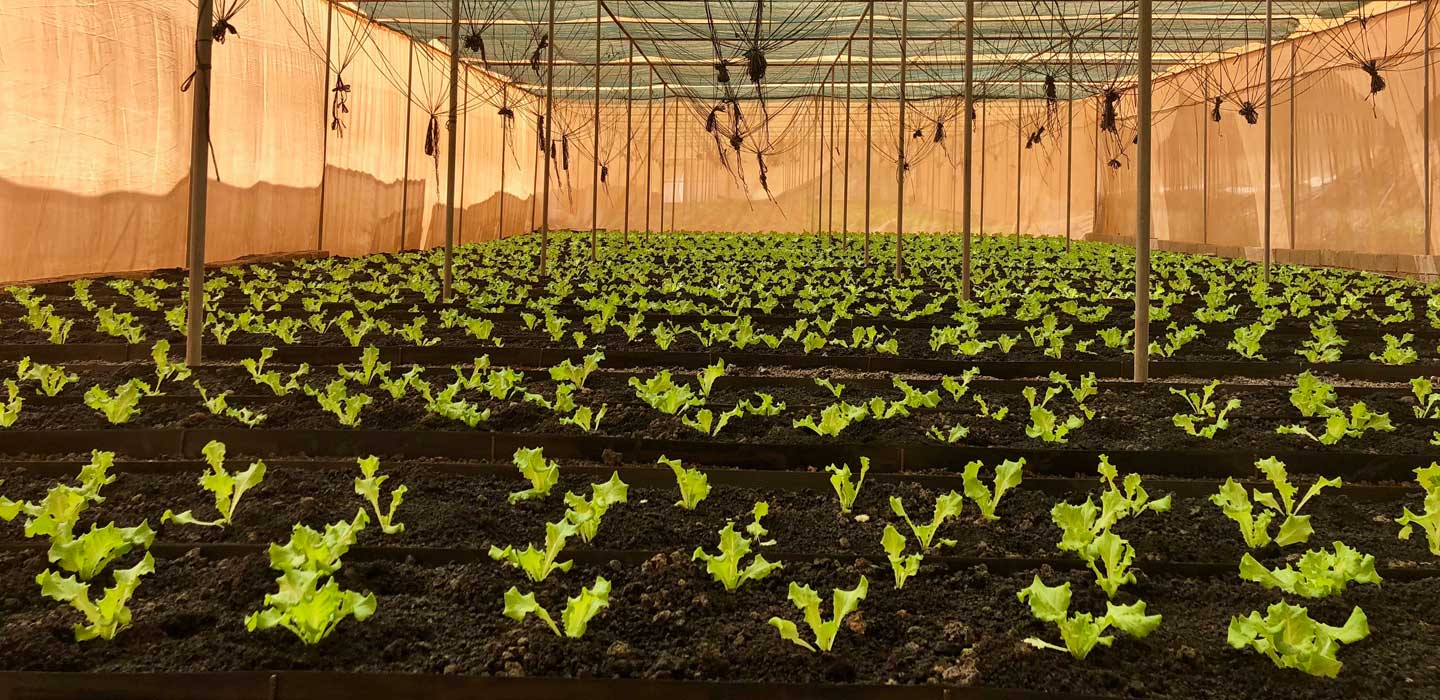Cabo Verde, islands at the forefront of climate-resilient development
IFAD Asset Request Portlet
Asset Publisher
Cabo Verde, islands at the forefront of climate-resilient development
Estimated reading time: 4 minutes
This week I had the chance to witness the impressive resilience and creativity of local people working to improve agriculture in Cabo Verde, a small island developing State (SID) – with limited, if any, natural resources. As a consequence of its volcanic formation, the topography of this Atlantic archipelago offers very scarce arable land, combined with high erosion due to its steep slopes and low vegetation cover. The total population is estimated at about 500,000 people with another 500,000 to one million Cabo-Verdean and descendants living overseas, many of whom contribute to the country’s economy through remittances.
During my visit to the country, the exchanges I had with the government, and especially with IFAD's beneficiaries, provided me with a very clear understanding about why we should keep and even increase investments in rural Cabo Verde: the country offers many of the solutions to ensure the future of agriculture in similar contexts of rapidly changing climate, environmental degradation and rising population.
The Sahel, a region particularly vulnerable to climate change in continental Africa, could greatly benefit from some of these solutions. Cabo Verde shares similar agro-ecological conditions with the Sahel countries, and thus the archipelago offers a number of innovative ideas that could be adapted throughout the Sahelian countries. This is also a wide space of opportunities for South-South Cooperation.
Over the last few decades, Cabo-Verdeans have progressively mastered low-cost and efficient technologies to produce in an increasingly constrained environment. Two technologies in particular struck me. A low-cost, extremely water efficient hydroponic system, which allows the growing of plants without soil, and the wide-spread use of photovoltaic energy to mobilize and manage water.
Low-cost and efficient water technology
I was often told that hydroponic systems were reserved to very capital-intensive companies in high-income countries. But in Cabo Verde, a well-trained and organized group of young people proved the exact opposite. After following a training session by the local NGO, Citi Habitat, a young woman, Albertina Tavares Monteiro, learnt how to implement a very low-cost hydroponic system based on porous volcanic rocks (largely available on the islands) and a very simple closed system through which water enriched with fertilizer circulates.
In the wake of a few production cycles and refinements of the technology, Albertina brought her husband into the endeavor and decided to expand the production. To optimize the use of water resources, the couple of entrepreneurs added shading nets to their hydroponic system, which lowered the temperature in the greenhouse, reducing evaporation and hence water use.
What was initially only a square meter of very artisanal production progressively became 4,000m2 of freshly grown cucumbers, lettuces and tomatoes. To improve the commercialization, the couple purchased a car to transport their production directly to retailers and hotels of Praia, the capital city.
Funded by IFAD, the local project POSER supported the scale-up of the couple’s company, Força di Vontadi, by providing new capital to increase the cultivated area using the hydroponic system. The results are stunning: thanks to the water reuse in the hydroponic system and the shading nets, a full production cycle of about 100 days requires only 7m3 per hectare per day while under normal conditions a farmer in Cabo Verde consumes four to five times more water!
Widespread photovoltaic use
In Cabo Verde, water mobilization for human consumption and agriculture has been a challenge for decades. Modern technologies are easing up the burden on the rural population, particularly on women. Following a 2016 review of POSER and the design of its climate-focused component POSER-Climat – funded by IFAD's Adaptation for Smallholder Agriculture Programme (ASAP) – IFAD and the Government of Cabo Verde decided to focus the interventions on “structuring” investments, mainly in the water sector.
Building on the upgrade of the existing water infrastructure, it was systematically decided to ensure the reliability of the pumping system and the downstream adduction system, including drip irrigation; increase the storage capacity of the reservoirs and cover them to avoid evaporation losses; and provide low-cost electricity supply with photovoltaic energy (PV). These upgrades were also made in a perspective of a watershed management, resulting in improved soil conservation, reduced erosion and better water infiltration.
The rural population, which now has access to energy through PV for water extraction and management, has largely benefited from the reduction in the cost of energy. Despite relatively high initial costs of about US$50,000 for 20kW for PV, the economic return on investments occur only four to five years after the introduction of the technology, according to an economic analysis conducted in 2018.
Our relevance and our role
This visit made me realize that more than ever, IFAD is imperative in the global fight against rural poverty and food insecurity. It also gave me a new perspective about our current and future role in the world of finance for agricultural and rural development.
Yet the resources IFAD can bring to Cabo Verde, and other countries in West and Central Africa, are still insufficient considering the development needs accentuated by climate change. As a consequence, our role of assembler of financial resources has never been so essential as it is now.
In this perspective, innovation for new financial resources was also at the core of my exchanges with the Government of Cabo Verde. Through a new potential intervention, we are now exploring the use of less conventional financial instruments to mobilize resources to meet the scale of the challenge. This consists in leveraging domestic and international private sector resources through diaspora as well as green or climate bonds. With the progressive reduction of concessional loans and the high cost of commercial borrowing, these less conventional bonds from the diaspora and climate or green investors represent an incredible opportunity for governments.
Publication date: 22 March 2019